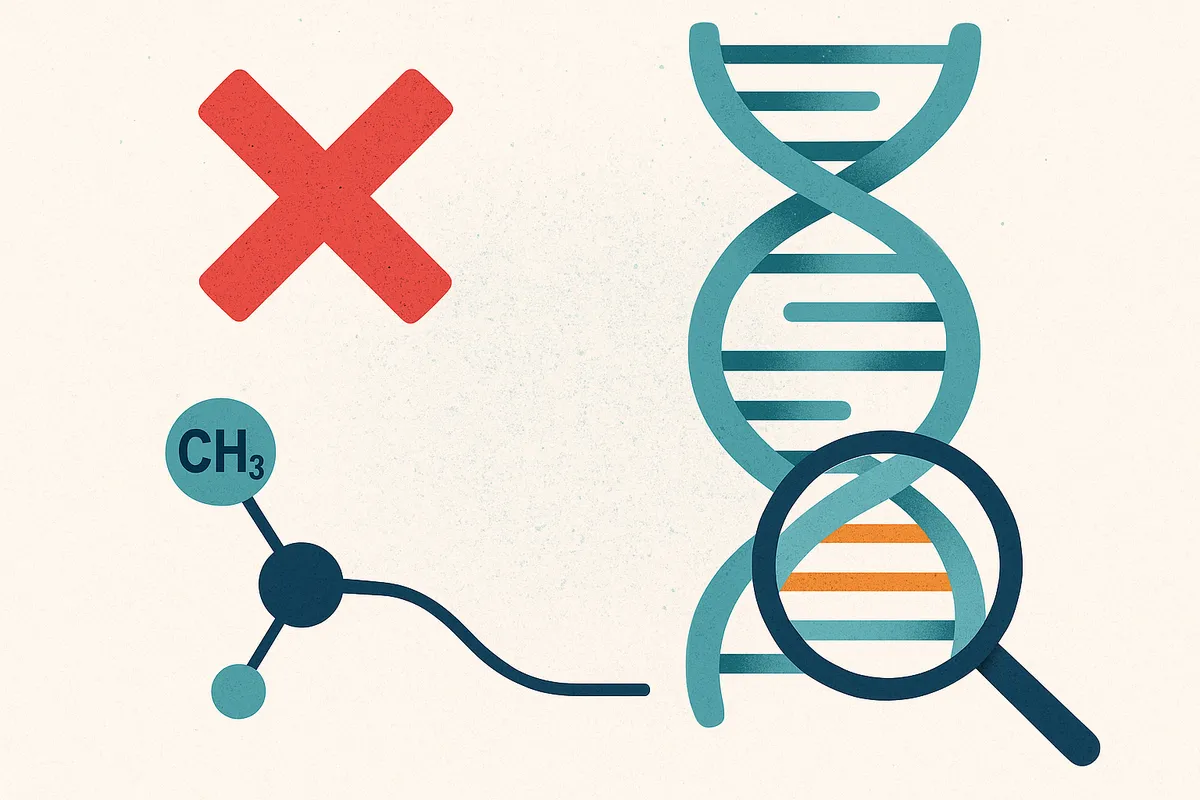No Signal in the Noise: When Null Results Are the News
 The Study That Found Nothing — And Why That Matters
The Study That Found Nothing — And Why That Matters
In the latest issue of the Journal of Molecular Neuroscience, Sohair Salem and colleagues at Egypt’s National Research Centre offer a rare breath of fresh air in autism research. they report a definitive absence of association between molecular changes and autism: promoter methylation and common sequence variations in miR‑146A and miR‑146B are not likely to play a role in autism. Ninety‑three autistic children and forty‑four age‑matched controls were tested, their DNA carefully bisulfite‑treated (a chemical step that converts unmethylated cytosines so methylated sites can be measured), amplified, sequenced, and analyzed. No significant differences emerged. The area under the curve for these miRNAs as biomarkers hovered well below diagnostic usefulness. In an era where headlines breathlessly attach “autism gene” to every discovery, a strong null finding can be more radical than one more candidate variant.
Why Silence Is Golden in Genetics
Every time a study fails to confirm a biomarker link, it chips away at the edifice of autism‑as‑molecular‑defect. For years, miRNAs have been pitched as promising diagnostics. Yet here, the logic collapsed under its own data. Methylation rates, SNP distributions, severity group comparisons — all flat lines. Even the one novel upstream variant they spotted appeared in just a single child and was handled with scientific restraint. When scientists admit there’s no signal, it helps shield autistic people from the endless churn of premature hype associated with genetic deficiency.
What’s at Stake Beyond the Bench
Unfortunately, the introduction still rehearses the same old deficit boilerplate blah, blah: autism is framed as deficits in social interaction, repetitive behavior, communication challenges. That is the price of entry in most biomedical journals. But the conclusion matters more: no biomarker value here. The beneficiaries of such results are not the sequencing labs or biotech startups. The beneficiaries are autistic people, whose lives are too often medicalized in the name of the next molecular hunt. Every null value weakens the case for diverting resources into genetic fishing expeditions instead of support, accessibility and healthcare equity.
Methods That Actually Protected
Methodologically, this was a small, underpowered study by GWAS standards. But that does not erase its importance. The team used standard methylation‑specific PCR (a lab assay that quantifies methyl marks in a targeted DNA region after bisulfite conversion), Sanger sequencing (the classic base‑by‑base method to read short DNA segments), and subgroup analyses (comparisons across predefined participant groups, like severity levels). They acknowledged limitations openly, downplayed the significance of the one novel variant and avoided inflating claims. They did not pretend their results should guide diagnostic policy. In the crowded world of autism biomarker papers, humility itself is protective.
The Reframe We Need
Imagine if research funders treated null findings as destinations, not dead ends. Instead of recycling another grant into “larger cohorts for functional validation,” they could pivot toward questions autistic people actually ask: How do we make hospitals less hostile? How do we reduce sensory injury in classrooms? What kinds of community supports work best for different autistic adults? Nulls like this one free us to shift attention. They say, clearly, the key to autism is not in this blood sample. It is in how society chooses to listen or not listen.
Breathing Room
After months of headlines about political figures blaming vaccines or celebrities promising genetic cures, a null finding is fresh air. It reminds us that the absence of evidence can itself be evidence — that autism is not waiting to be solved by a single genetic switch or molecular marker. The science said no, and in saying no it offered autistic people something rare: a reprieve from the noise. The work ahead is to amplify that reprieve into a new signal — one that tells funders, clinicians and policymakers to stop chasing genes and start funding respect.